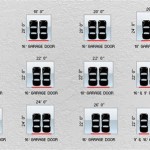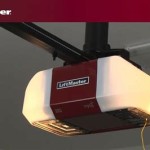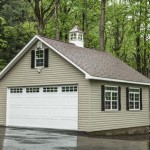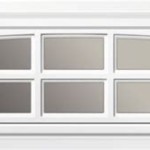1/64 Scale Garage Diorama: A Miniature World of Automotive Passion
The creation of a 1/64 scale garage diorama provides enthusiasts with an unparalleled opportunity to meticulously recreate and showcase their passion for automobiles in miniature form. These intricate dioramas represent far more than mere collections of diecast vehicles; they are carefully constructed scenes that evoke a sense of realism, history, and personal connection to the world of automotive culture. From classic car restoration projects to contemporary tuning shops, the possibilities for thematic exploration are virtually limitless, making the 1/64 scale garage diorama a captivating and increasingly popular hobby for both seasoned modelers and newcomers alike.
The appeal of this niche hobby lies in its accessibility, both in terms of space requirements and cost. Compared to larger scale models, 1/64 dioramas can be easily housed and displayed in relatively confined areas, making them suitable for apartments, offices, or dedicated display cabinets. While some projects can involve considerable expense, the starting cost for a basic diorama remains manageable, allowing enthusiasts to gradually build and refine their creations over time. The process is a blend of artistic expression, technical skill, and historical appreciation, resulting in a tangible representation of automotive passion.
Key Point 1: Planning and Design: The Foundation of a Realistic Diorama
Before embarking on the construction of a 1/64 scale garage diorama, careful planning and design are crucial. This initial phase sets the stage for a successful project and ensures that the final product accurately reflects the intended theme and atmosphere. The planning stage involves considering the overall size and layout of the diorama, selecting the appropriate materials, and researching the specific details that will contribute to its realism.
Firstly, determining the dimensions of the base is paramount. This decision is influenced by the available space and the desired scope of the diorama. A smaller base might accommodate a single garage bay, while a larger base could incorporate multiple bays, an office area, and exterior details such as a parking lot or driveway. Once the dimensions are established, a rough sketch or digital rendering of the layout is highly recommended. This visual representation helps to visualize the placement of buildings, vehicles, and accessories.
Next, selecting the appropriate materials is essential for achieving a realistic aesthetic. Common materials for the base structure include foam board, cardboard, and wood. Foam board offers a lightweight and easily workable option, while wood provides greater durability and stability. The choice depends on the desired level of permanence and the complexity of the construction. For the exterior and interior walls, styrene plastic sheets are a popular choice due to their smooth surface and ease of painting and detailing. Texturing materials such as sand, gravel, and flocking can be used to create realistic ground surfaces and landscaping.
Thorough research is indispensable for ensuring accuracy and authenticity. Depending on the chosen theme, research might involve studying vintage garage designs, examining photographs of real-world workshops, or consulting with automotive experts. Paying attention to details such as the type of tools used, the layout of equipment, and the signage displayed can significantly enhance the overall realism of the diorama. This research should extend to the vehicles being displayed, ensuring that they are appropriate for the era and theme of the diorama.
Key Point 2: Construction and Detailing: Bringing the Diorama to Life
Once the planning and design phase is complete, the construction and detailing process begins. This stage involves assembling the base structure, creating the buildings and accessories, and meticulously detailing each element to achieve a realistic and visually appealing finish. The level of detail incorporated at this stage is what truly distinguishes a well-crafted diorama from a basic display.
The construction of the base structure typically involves cutting and assembling the chosen material to create the desired shape and dimensions. For foam board or cardboard bases, a sharp hobby knife and ruler are essential tools. For wooden bases, a saw and woodworking adhesives are required. Once the base is assembled, the exterior and interior walls can be attached. Styrene plastic sheets can be cut to size and glued to the base, creating the framework for the garage building. Windows and doors can be added using pre-made components or scratch-built from styrene or other materials.
Creating realistic accessories is a crucial aspect of the detailing process. This involves sourcing or crafting miniature tools, equipment, and furniture to populate the garage interior. Miniature tool sets, workbenches, and shelving units can be purchased from hobby stores or online retailers. Alternatively, these items can be scratch-built using styrene, wood, or other materials. Adding details such as wiring, plumbing, and lighting fixtures can further enhance the realism of the scene. Miniature LED lights can be used to illuminate the interior of the garage, creating a warm and inviting atmosphere.
Weathering and aging techniques are essential for creating a realistic and believable diorama. Applying washes and dry brushing techniques to the walls, floors, and accessories can create the appearance of dirt, grime, and wear and tear. Decals and signage can be added to further enhance the authenticity of the scene. Rusting effects can be achieved using specialized weathering powders or paints. The goal is to create a diorama that tells a story and conveys a sense of history and authenticity.
Key Point 3: Display and Presentation: Showcasing the Miniature World
The final stage in the creation of a 1/64 scale garage diorama is the display and presentation. This involves selecting an appropriate display case, arranging the vehicles and accessories, and adding final touches to enhance the overall visual appeal. A well-presented diorama not only protects the model from dust and damage but also showcases it in the best possible light.
Selecting an appropriate display case is crucial for protecting the diorama and enhancing its visual appeal. Acrylic display cases are a popular choice due to their clarity and durability. These cases provide a clear view of the diorama while protecting it from dust and damage. The size of the display case should be carefully chosen to accommodate the diorama and allow for adequate ventilation. Glass display cases offer a more elegant and sophisticated option, but they can be more expensive and fragile.
The arrangement of the vehicles and accessories within the diorama is a key element of the presentation. Vehicles should be positioned in a way that tells a story and creates a sense of realism. For example, a classic car undergoing restoration might be placed on a lift, with tools and parts scattered around it. A contemporary tuning shop might feature a modified car on display, with a workbench cluttered with performance parts. The goal is to create a visually dynamic and engaging scene that captures the viewer's attention.
Adding final touches such as background scenery, lighting effects, and descriptive labels can further enhance the presentation of the diorama. A backdrop depicting a cityscape or rural landscape can add depth and realism to the scene. Strategic placement of LED lights can highlight specific areas of the diorama and create a dramatic effect. Descriptive labels can provide information about the vehicles, the theme of the diorama, and the techniques used in its construction. These final touches can elevate the diorama from a simple model display to a captivating work of art.
The culmination of careful planning, meticulous construction, and thoughtful presentation results in a 1/64 scale garage diorama that is more than just a collection of miniature vehicles. It is a tangible expression of automotive passion, a miniature world brought to life through dedication, skill, and attention to detail. The journey from initial concept to finished diorama is a rewarding experience that allows enthusiasts to connect with their love of automobiles in a creative and engaging way.

Garages Workshops Dioramas 1 64 Scale Diorama Kits
Diorama Papercraft Garage Service Diecast

Moreart 1 64 Car Modification Shop Building Model Diorama

Showcase Higher End 1 64 Scale Double Level Parking Garage Diorama From Amazon

1 64 Scale Diorama Display For Diecast Cars Double Floor Rocket Bunny Garage Sale Hotwheels Majorette Etc Gift Man

Build A Garage Diorama Toyo Tires 1 64 Scale For Hot Wheels

Magic City 1 64 Diorama Spoon Tuner Set Garage 110041
G Fans 1 64 Diorama Garage Tools Model With Led Lights Shopee Singapore

1 64 Realistic Detailing Diorama Accessories Hobbies Toys On Carousell

Diorama Garage Diecast 1 64








